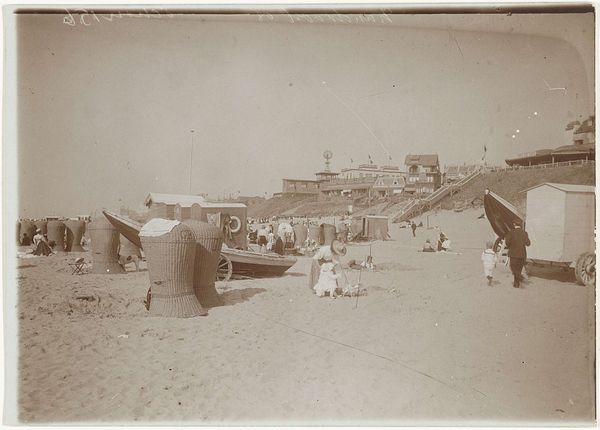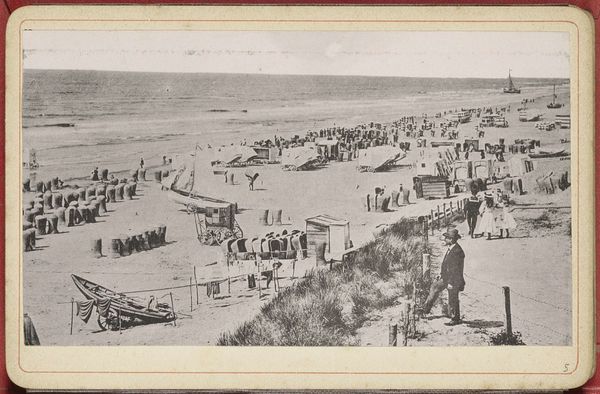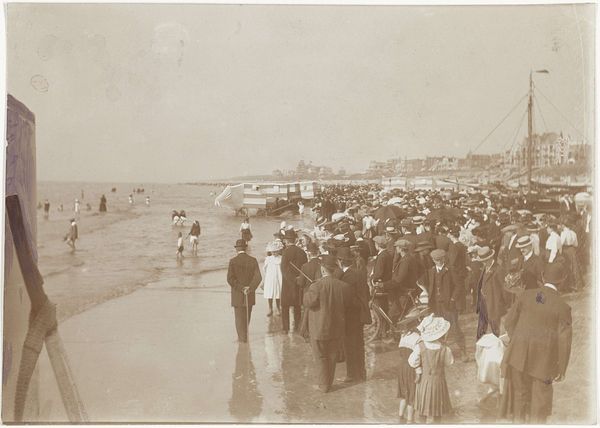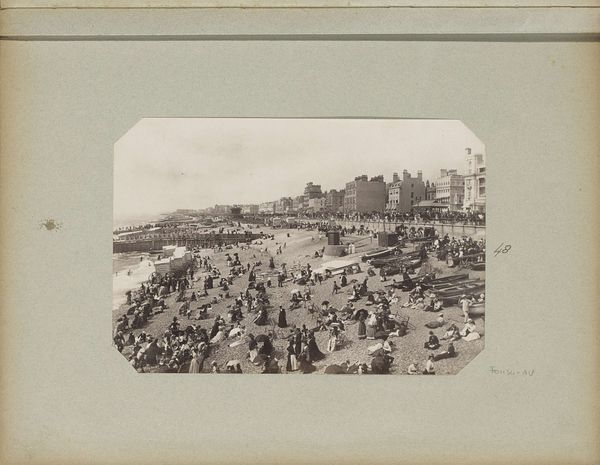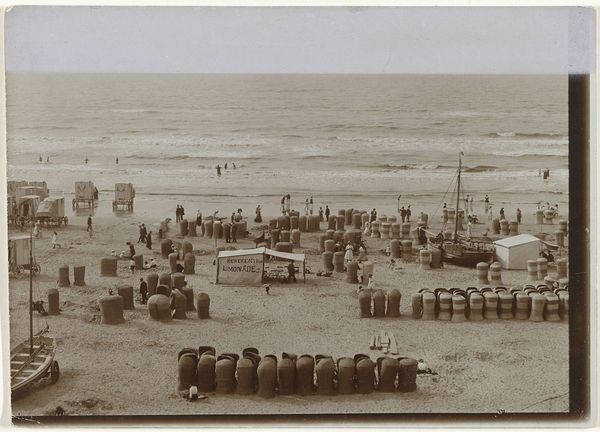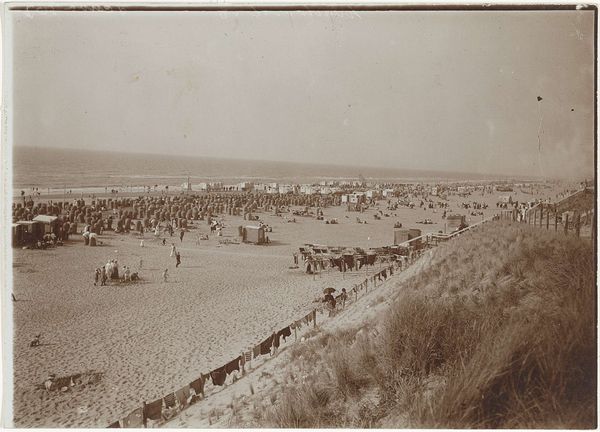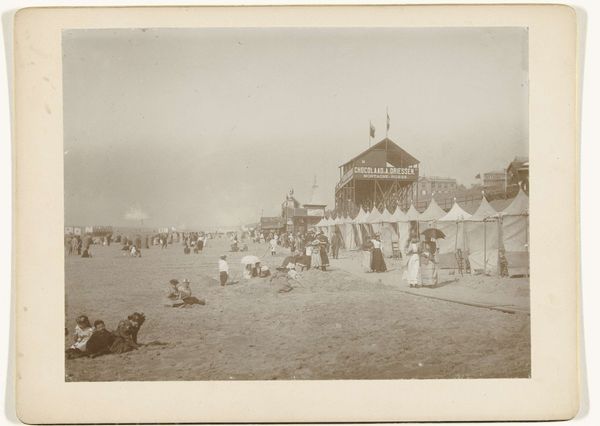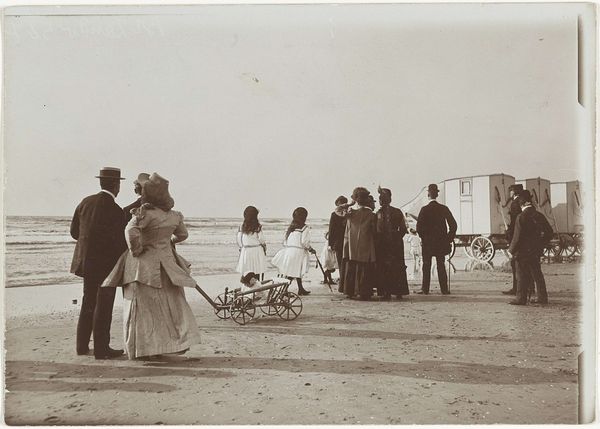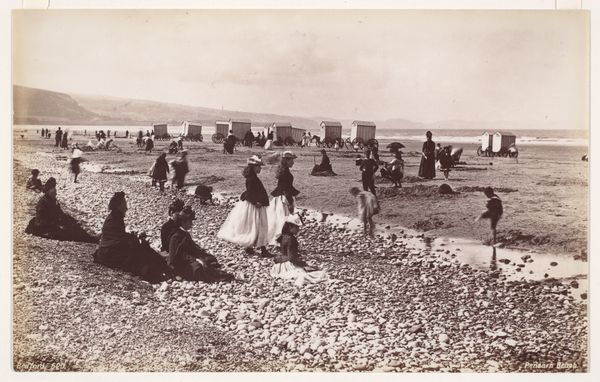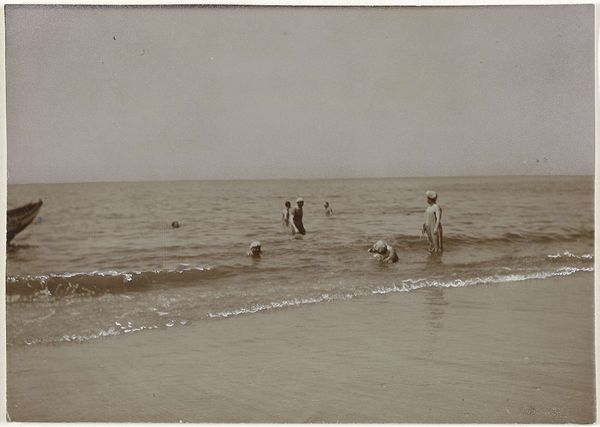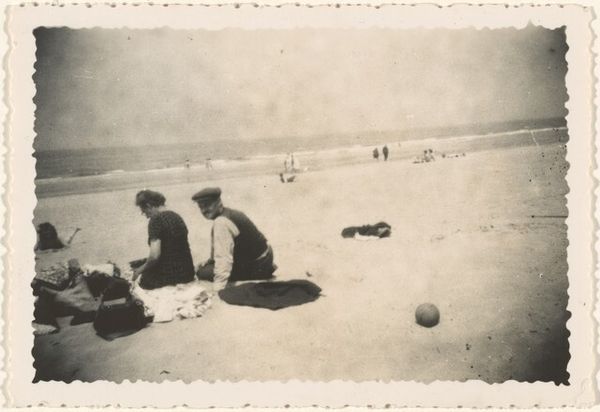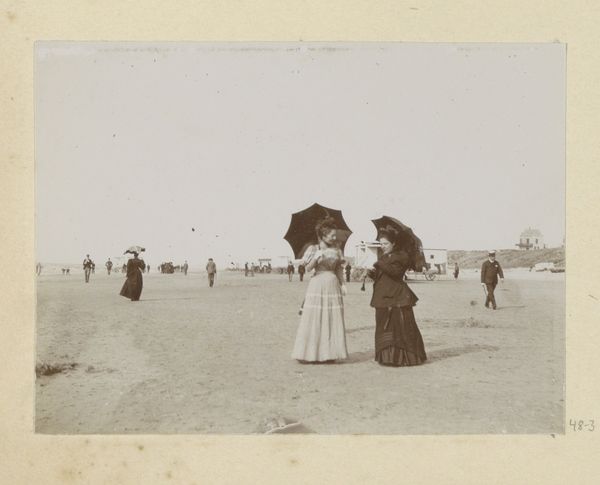
Copyright: Rijks Museum: Open Domain
Editor: Here we have "Strand in Zandvoort", a gelatin-silver print made between 1900 and 1905 by Knackstedt & Näther. It shows a bustling beach scene, and I'm immediately struck by the way the muted tones almost flatten the space, creating a complex visual texture. What catches your eye about it? Curator: What intrigues me is the orchestration of tonal values and their strategic arrangement across the plane. Consider the nuanced gradation in the sky and sand, mirrored by the human figures scattered in dark masses across the lighter space. This tonal distribution establishes an intricate rhythm and balance, underscoring the image's formal integrity. Do you perceive how the beach huts punctuating the horizon contribute to a visual staccato? Editor: Yes, I see how the repeating shapes create that rhythm. So, it's less about what's happening in the scene and more about how it's all put together? Curator: Precisely. The subject matter, while undeniably present, serves more as a vehicle. Notice the almost obsessive concern for detail within each form, be it a figure or a hut. It reveals a concentrated focus on articulating shape, texture, and, above all, the interplay of light. Does the image resonate with your understanding of formalist principles now? Editor: It does. I initially saw just a historical snapshot, but you’ve shown me how the formal elements are really the focus. Curator: Indeed, in art like this, close examination reveals not merely a representation, but a composition where every element has been weighed for its formal impact. Editor: Thank you. I'll definitely be looking at photographs differently now.
Comments
No comments
Be the first to comment and join the conversation on the ultimate creative platform.
